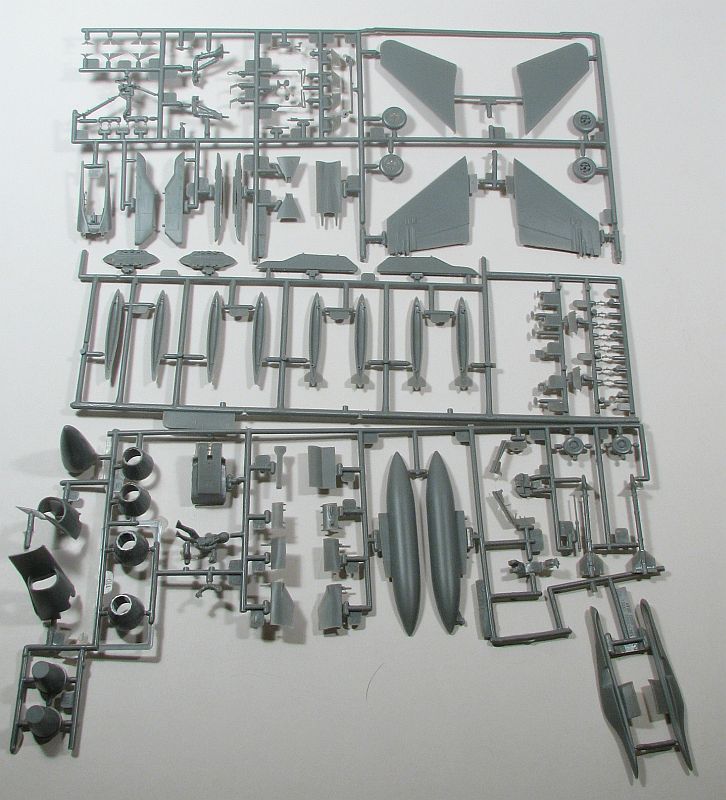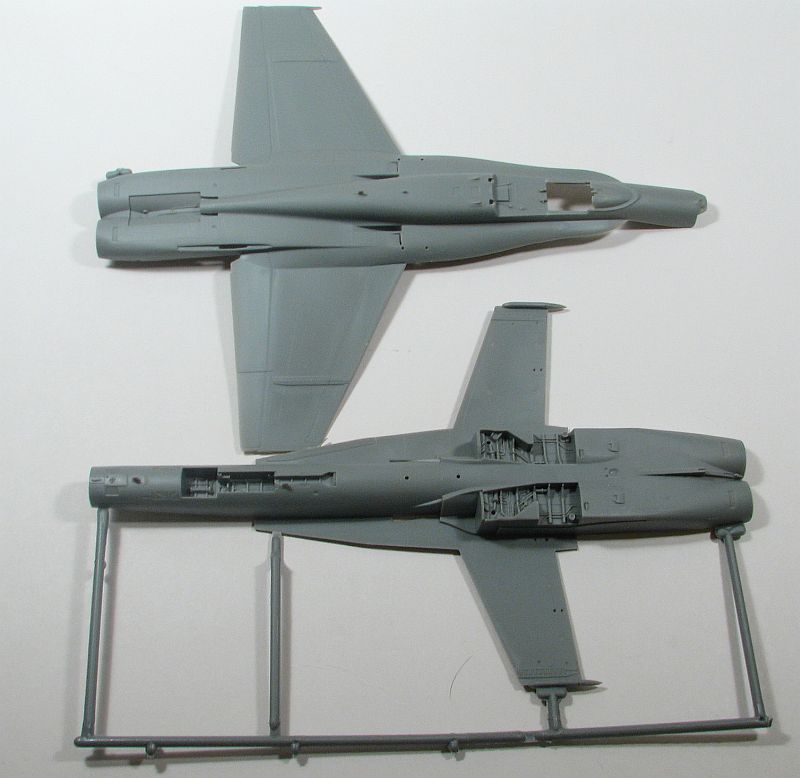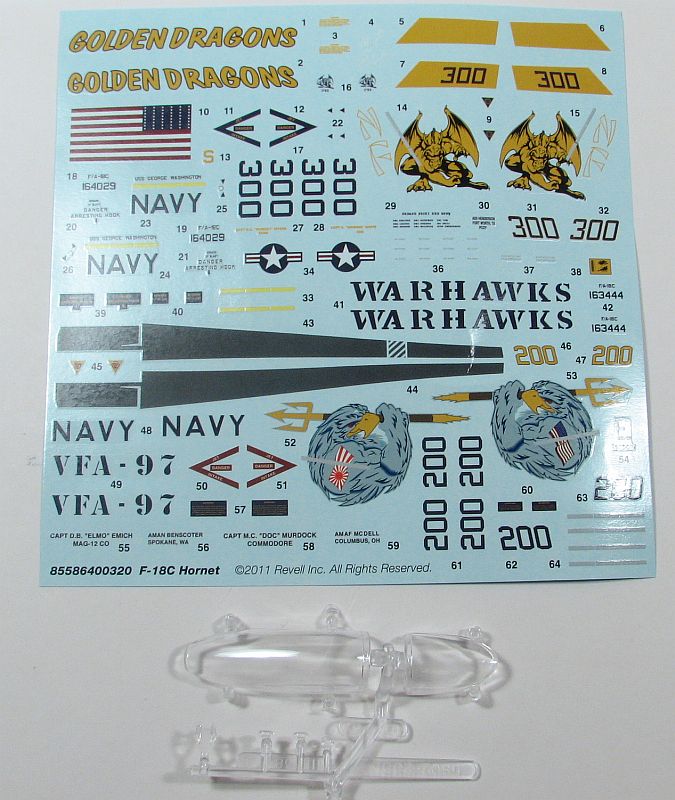
Revell 1/48 F-18C Hornet
By Matt Bittner
The Kit
The Revell 1/48 F-18C Hornet consists of plenty of grey, injected plastic pieces and a sprue of 6 clear pieces. Decals – in register and nicely printed – are for two Hornets: F/A-18C, VFA-97 Warhawks and F/A-18C, VFA-192, Golden Dragons, USS George Washington. Both have very colorful and striking tail art.Construction naturally starts with the cockpit, and it's a very nice cockpit out-of-the-box. The only thing truly needed are seat belts, and one option is to use the paper template on the instruction sheet to make at least the shoulder harness. The cockpit consists of a tub, seat (made up of four separate parts), instrument panel (with raised detail), control column and throttle. If you close the canopy you'll truly need nothing else but seat belts. Nothing at all, if you decide to add the pilot. Even with displaying the model with the canopy open it still is a great cockpit and will look excellent with the right about of dry-brushing and washes.
Now the cockpit is finished things start progressing towards a complete airframe. Add the cockpit to the upper fuselage half, and the engine exhausts and one-piece horizontal tail to the lower fuselage half and you can assemble those halves together. Since the wing is in half, and each half already connected to the respective fuselage, once you assemble the fuselage together you have almost a complete airframe. One thing the instructions don't state is if you need weight in the nose. I would suspect so, given the size and scale of the kit, so you might either want to just "add a bunch", or experiment to come up with the proper weight. One other thing to consider before gluing the fuselage halves together is if you are planning on adding any stores to the wings' underside. If so, then you'll need to open up the holes for the respective pylons.After adding the nose cone and side blisters to the sides of the nose, then you start assembling the rest of the airframe. That includes a two-part intake on both sides along with a piece that replicates the side of the fuselage that includes the outside main landing gear door.
Once this is all together then I would skip ahead a few steps and add the vertical tail surfaces. Between adding the intakes, etc. and the vertical tail surfaces the instructions have you add all the pylons, weapons and fuel tank(s), as well as all the landing gear. This is all best left off until after the majority of painting is finished.Conclusion
If you're looking for a relatively quick build of an F/A-18C and not put off by raised panel lines (plus want to save a little in the wallet) then you'll want to try your hand at the Revell F-18C. While it is an older mold - and aside from the panel lines - it still really holds up well to today's more "modern" kits.
(We published a full build on this kit quite a few years ago.)
My thanks to Revell for supplying the review Hornet.



